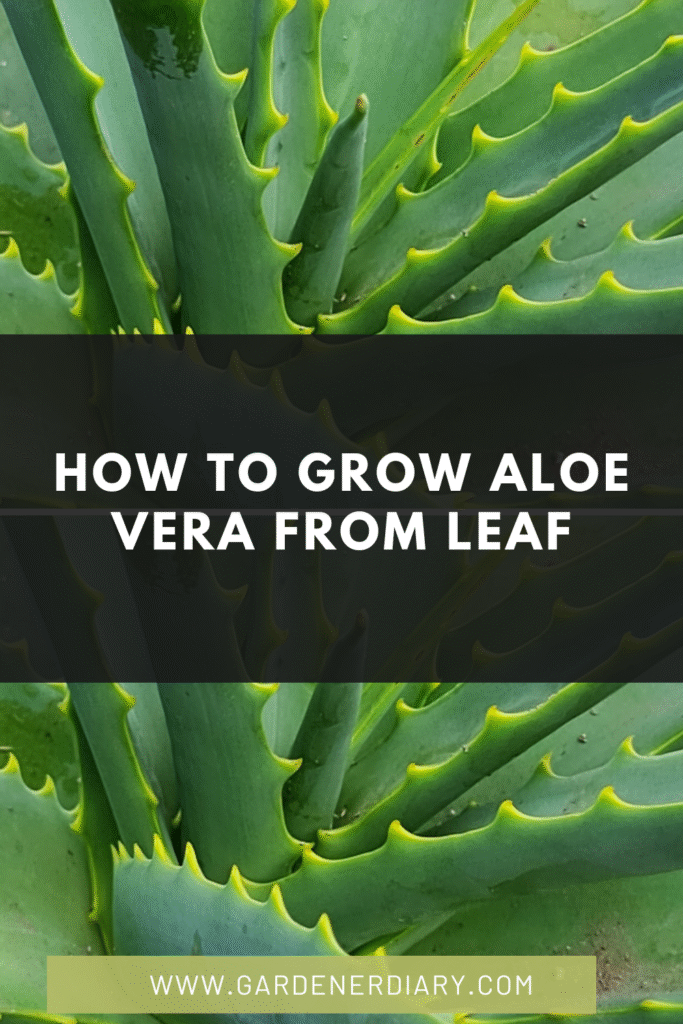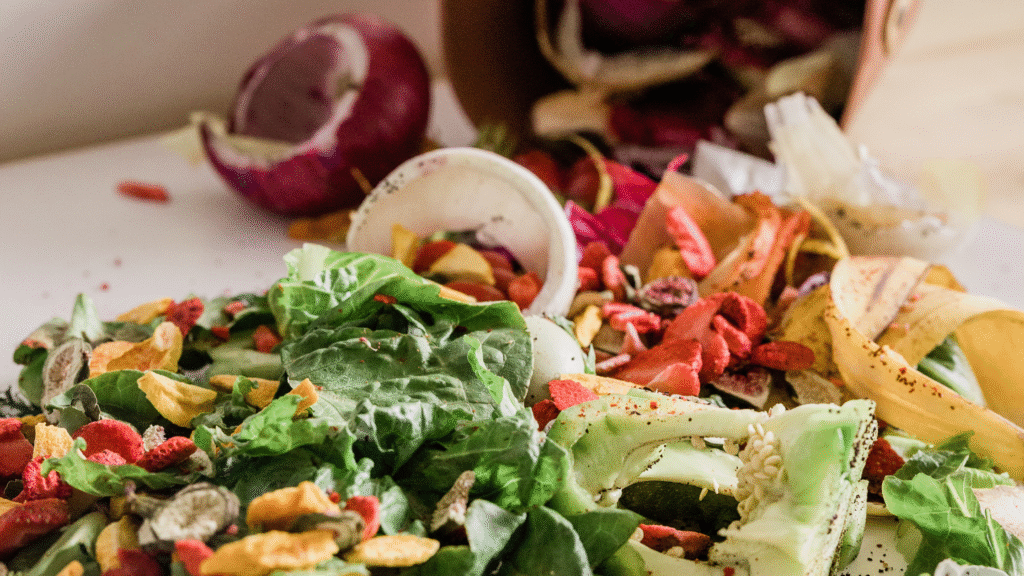Key Takeaway
- Cut a healthy, mature aloe leaf near the base
- Let the cut end dry and callous for 1–2 days
- Use well-draining succulent or cactus soil
- Insert the leaf 1–2 inches deep into the soil
- Water lightly—do not soak the soil
- Place in a warm, bright spot with indirect sunlight
- Be patient—rooting may take weeks or fail
- For better results, grow from pups instead of leaves
How to Grow Aloe Vera from a Leaf: The Ultimate Guide to Propagation (and Why It’s So Challenging)
The aloe vera plant is a popular houseplant, celebrated for its natural healing properties and easy-care nature. It’s no wonder many people want to propagate it to have multiple plants for their home or to share with friends. When it comes to propagation, one of the most common questions is: “Can I grow aloe vera from a single leaf?”
The short answer is yes, it’s technically possible, but it is notoriously difficult and has a very low success rate. Unlike many other succulents, aloe vera leaves are not naturally equipped to form new plants from a single detached leaf. However, with the right knowledge and a lot of patience, you can give it your best shot. This comprehensive guide will walk you through the precise steps and techniques to maximize your chances of success, and also explain why you might want to consider more reliable methods.
Understanding Aloe Vera Propagation: The Science Behind It
Before we get our hands dirty, it’s helpful to understand a little about the biology of the aloe vera plant. Unlike many other succulents that are able to grow a new plant from a single leaf (e.g., Echeveria, Sedum), aloe vera has a different genetic makeup and growth pattern. The leaves contain a significant amount of water and a complex mixture of compounds, but they lack the necessary meristematic tissue (the plant equivalent of stem cells) at the base to produce new roots and a new plant. This is a key reason why it’s so challenging to propagate a plant from a leaf. The phytochemical composition of aloe vera is well-documented in scientific literature, providing context for its properties, as seen in this PMC publication.
The natural and most successful way aloe vera propagates is by producing “pups” or offsets—small, new plants that grow from the base of the mother plant. These pups already have their own root systems and are much more likely to survive and thrive. This method is the foundation for a thriving fast-growing aloe vera plant.
Step-by-Step Guide: How to Propagate an Aloe Vera Leaf
If you’re still determined to try, here are the detailed steps to give your aloe vera leaf the best chance of survival.
Step 1: Choose and Harvest the Right Leaf
The selection of the leaf is the most critical step. A healthy, mature leaf is your only hope.
- Select a Healthy Leaf: Choose a thick, plump, and mature leaf from the outer ring of a healthy mother plant. Avoid new, thin leaves or old, yellowing ones.
- Make a Clean Cut: Using a clean, sharp knife or shears, make a precise, diagonal cut at the very base of the leaf, where it connects to the main stem. A clean cut is vital because it exposes the small area where a new callus and roots might form.
Step 2: Allow the Leaf to Callus
This step is non-negotiable for success. If you plant the leaf immediately, it will absorb too much water from the soil and rot.
- Let it Dry: Place the cut leaf in a warm, dry, and shaded area. Do not expose it to direct sunlight.
- Wait for a Callus: Wait until a tough, dry, calloused layer forms over the cut end. This can take anywhere from a few days to a week or more, depending on the humidity. This callus acts as a protective barrier against fungal infections and rot.
It is during this stage that the plant’s natural defense mechanisms are at work. The formation of a callus is a natural response to injury, protecting the delicate internal tissues from pathogens.
Step 3: Prepare the Potting Medium
The right potting mix is essential to prevent rot and encourage root growth.
- Use a Succulent Mix: Use a specialized succulent or cactus potting mix. These mixes are designed to be well-draining. You can also mix your own by combining potting soil with perlite and coarse sand in a 1:1:1 ratio.
- Choose the Right Pot: Use a small, shallow pot with a drainage hole. A terracotta pot is ideal because it allows excess moisture to evaporate.
Step 4: Planting the Leaf
Once the callus has formed, you can plant the leaf.
- Insert the Leaf: Gently press the calloused end of the leaf just slightly into the soil. You want it to stand upright, but you don’t want to bury it deep. You can also lay the leaf flat on the soil surface, with the cut side touching the soil.
- Do Not Water: Do not water the soil yet. The leaf has all the moisture it needs to sustain itself. Watering at this stage is a guaranteed way to cause it to rot.
Step 5: Provide the Right Environment
The key to successful propagation is creating the perfect microclimate.
- Light: Place the pot in a location with bright, indirect light. Direct sunlight is too harsh and will dry out the leaf too quickly.
- Temperature: Maintain a warm, consistent temperature. Aloe vera thrives in temperatures between 18-27°C (65-80°F).
- Patience: This is the most important step. It can take weeks or even months for a new plant to form, and many will fail. Don’t be discouraged if the leaf shrivels and dies.
The Better Method: Propagating Aloe Vera from a Pup or Cutting
Given the low success rate of the leaf method, almost all gardeners and nursery owners use a different, more reliable method: propagating from pups or cuttings. This is also how aloe vera is cultivated for its medicinal properties in farms, as mentioned in a study on the therapeutic uses of the plant here. Another study discusses how vegetative propagation is used for large-scale production, which you can read about here.
For more details on these methods, you can check out our other guides on how to grow aloe vera from a cutting and how to grow aloe vera without roots.
The Pup Method: Highly Recommended
A “pup” is a small, new aloe vera plant that grows from the base of the mother plant.
- Separate the Pup: When a pup is about 3-4 inches tall and has its own small roots, gently dig it up and separate it from the mother plant.
- Plant It: Plant the pup in its own pot with fresh succulent potting mix.
- Water: Water lightly and treat it as a new plant. The success rate for this method is near 100%.
The Importance of Aloe Vera for Sustainable Farming
Growing aloe vera, whether from a leaf, pup, or even from a seed (which is also challenging), has significant implications beyond a simple houseplant. On a larger scale, in a farm setting, aloe vera is a resilient and low-maintenance crop. Research has even shown that aloe vera leaf extract can act as a natural growth enhancer for other plants, such as poplar trees, highlighting its potential in sustainable agriculture. You can find more information on this in this ResearchGate publication.
Whether you want to grow a single plant indoors or manage a full-scale operation in a farm, understanding its biology and choosing the most effective propagation method is key. Even when growing them outside in a garden bed, these principles hold true.
Conclusion: Putting It All Together
While the romantic idea of growing a new aloe vera from a single leaf is appealing, the reality is that it is a difficult and often unsuccessful process. For those who want to try, the key to a glimmer of hope lies in making a clean cut, allowing the wound to fully callus over, using a well-draining soil, and providing a warm, bright, indirect-light environment.
For those who prioritize a higher success rate, the best path forward is to propagate from a healthy pup. This method, which involves separating a new plant from the mother, is aloe vera’s natural way of reproducing and guarantees a much better outcome. Ultimately, the choice is yours, but armed with this knowledge, you can make an informed decision and still have a lot of fun experimenting with your plants.
No matter which method you choose, the reward of a thriving aloe vera plant is well worth the effort.


